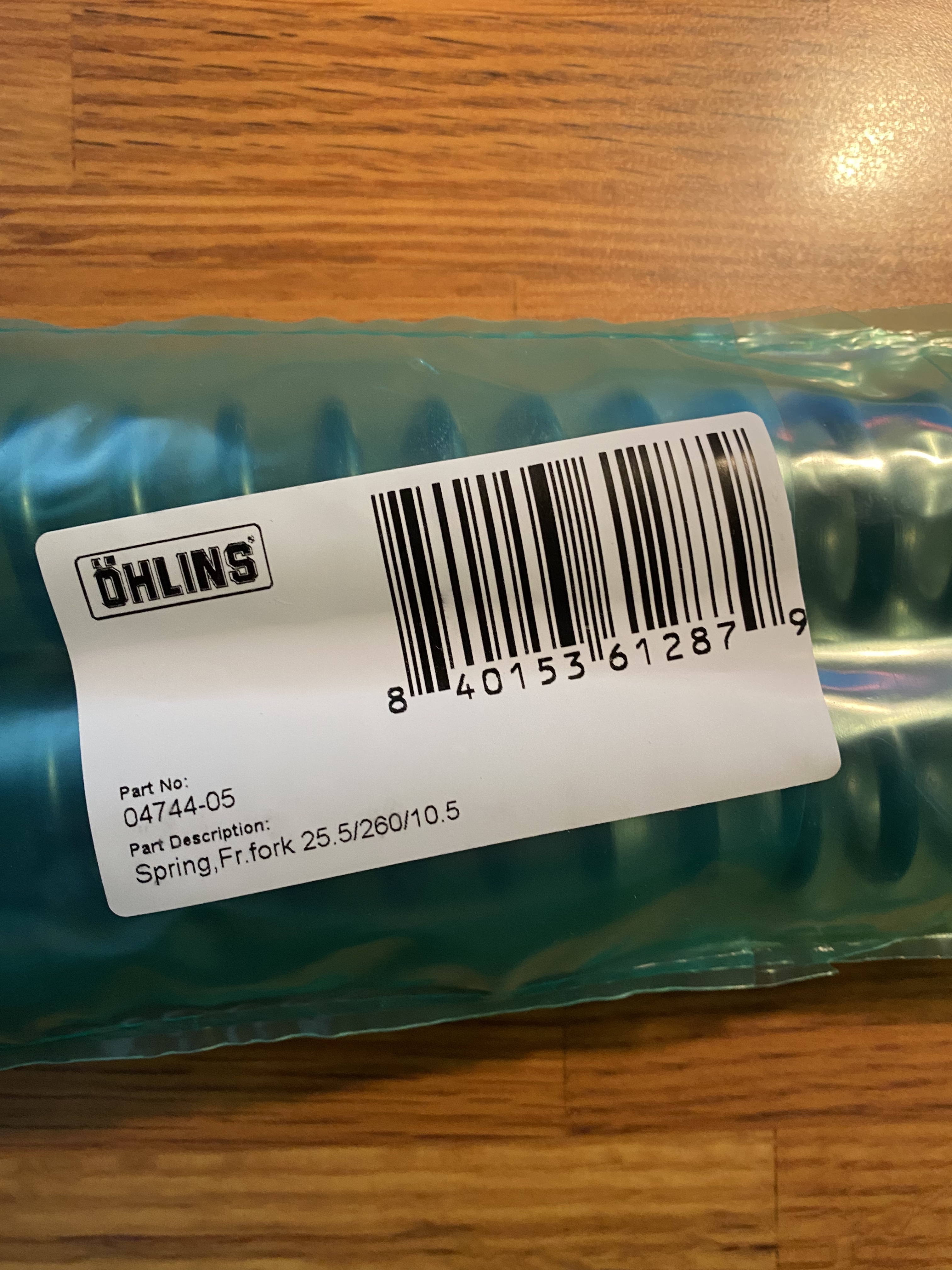Done and done. Definitely a 2 person job when you do it your first time but maybe able to be done singlehanded once you get the process down. Managed to further mar the preload adjusters despite best efforts to prevent. Whatever…
1. Place bike on rear stand
2. Support the front of the bike from the head stock
3. Remove the front wheel and fender
4. Disconnect EC cables using a plastic pick
5. Turn the preload adjuster counterclockwise until it stops
6. Loosen handlebar pinch bolts
7. Loosen top triple clamp bolts
8. Loosen the fork top caps
9. Completely loosen and removed fork top caps from the outer tubes
10. Push the fork lower up to expose the top cap assembly. Secure it to with a strap to the fork stand
11. Secure the nut underneath the top cap assembly with a 19 mm open ended wrench. Unscrew the preload adjuster until the top cap assembly is removed.
12. Remove upper spring seat by unscrewing the 19 mm nut with a long socket
13. Remove spring making sure to let excess oil drip into forks.
14. Repeat on other side
15. Put in new springs with markings up
16. Install the upper spring seat and hand tighten locknut until it the seat contacts the damper rod. Put pressure on the upper spring seat to ensure it’s seated properly on the spring
17. Hand tighten the top cap by holding the flats of the damper rod with 14 mm cone wrench and tighten the preload adjuster (I snugged it up with ratchet. Didn’t feel comfortable putting full 19 Nm on the preload adjuster)
18. Lightly grease o-ring on top cap
19. Lower fork lowers
20. Tighten top caps to outer tubes to a little more than hand tight
21. Torque handlebar and top triple clamp bolts to 22 Nm
Spring rate recs from
@roadracerx were spot on. 68 kg suited up and 8.5/9 combo got me to the recommended 30 mm static/42 mm rider sags with 3 turns on preload.


